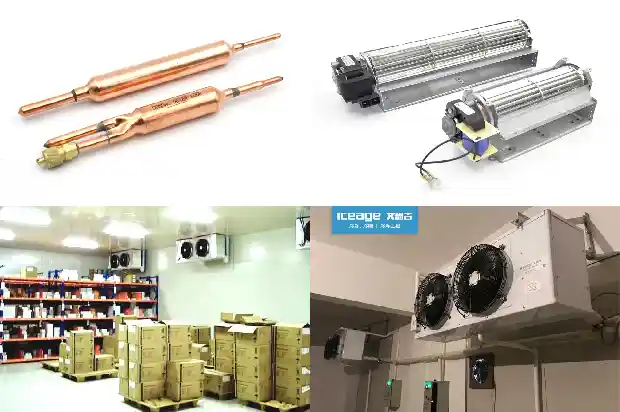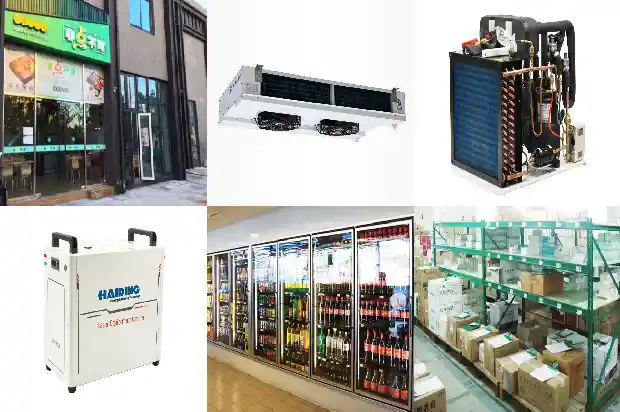What are the hazards of water leakage in a cold storage?
2024-08-29
Cold storage is different from general industrial and civil buildings. It is a low-temperature sealed storage built with thermal insulation materials. Its cold storage structure is relatively complex and has a high cost. It is afraid of moisture, water, hot air, and cold leakage. It is most taboo to have ice, frost, water, and steam. Once the civil engineering of cold storage, such as insulation and other structures, seeps water, it will cause a series of problems.
If the water seepage of the cold storage penetrates the wall or the moisture-proof and vapor barrier layer and insulation layer, then when the temperature of the cold storage is below 0°C, the water will freeze. Due to the increase in volume when water freezes, it will squeeze the insulation layer and cause deformation. The temperature of the cold storage will fluctuate. When the temperature of the cold storage rises, the ice formed by the seepage water at low temperatures will slowly melt and at the same time will absorb the water on the outside. When the temperature of the cold storage drops again, the water freezes again.
During the operation of the cold storage, the cold storage should be maintained well. Regularly check whether there is water leakage on the cold storage surface, whether the cold storage drainage is smooth, whether the downspout is damaged, and whether there is water seepage in the external drainage pipeline of the cold storage. If there is any, it must be repaired in time and protective measures must be taken.
While maintaining and inspecting the cold storage, also observe whether the ground of the cold storage is normal, whether there is bulging, whether the insulation layer has dropped, become damp, or whether there are cracks. If these phenomena occur, be sure to find the cause and take remedial measures to prevent it from becoming serious.
If the water seepage of the cold storage penetrates the wall or the moisture-proof and vapor barrier layer and insulation layer, then when the temperature of the cold storage is below 0°C, the water will freeze. Due to the increase in volume when water freezes, it will squeeze the insulation layer and cause deformation. The temperature of the cold storage will fluctuate. When the temperature of the cold storage rises, the ice formed by the seepage water at low temperatures will slowly melt and at the same time will absorb the water on the outside. When the temperature of the cold storage drops again, the water freezes again.


During the operation of the cold storage, the cold storage should be maintained well. Regularly check whether there is water leakage on the cold storage surface, whether the cold storage drainage is smooth, whether the downspout is damaged, and whether there is water seepage in the external drainage pipeline of the cold storage. If there is any, it must be repaired in time and protective measures must be taken.
While maintaining and inspecting the cold storage, also observe whether the ground of the cold storage is normal, whether there is bulging, whether the insulation layer has dropped, become damp, or whether there are cracks. If these phenomena occur, be sure to find the cause and take remedial measures to prevent it from becoming serious.
Related Articles
- Basic Faults and Preventive Maintenance of Water - cooled Units
- Three Common Methods for Removing Water Scale from Water - cooled Condensers
- What Are the Differences Between Chillers and General Water - cooled Equipment?
- Selection of Bypass Control Valves for Air - conditioning Water Systems
- Operation of Screw - type Water - cooled Chiller Units
- Characteristics and Differences among Water System, Air System and Refrigerant System
- Accident Handling and Precautions for Circulating Water Pumps
- Startup, Shutdown and Accident Handling of Jet Water Pump
- How to Select and Use Water Pumps for Air - conditioning Systems?
- How to Choose Between Water-cooled and Air-cooled Cold Storage?
- Introduction to Various Water Tanks in Air - conditioning Systems
- For Computer Room Air Conditioners, Besides Air - cooled and Water - cooled, What Other Cooling Methods Are There?
- Refrigeration System Failures: Handling System Blockages and Water Infiltration
- Both are dual - connected systems. How to choose between air - fluorine - ground - water and air - water - ground - water systems after all?
- Precautions for the Installation and Use of Water Flow Switches
- Water Flow Control Technology for Small Air-cooled Hot and Cold Water Units
- How to accurately choose water-cooled and air-cooled chillers?
- 4 Points on Causes of Water Leakage in Closed Cooling Towers
